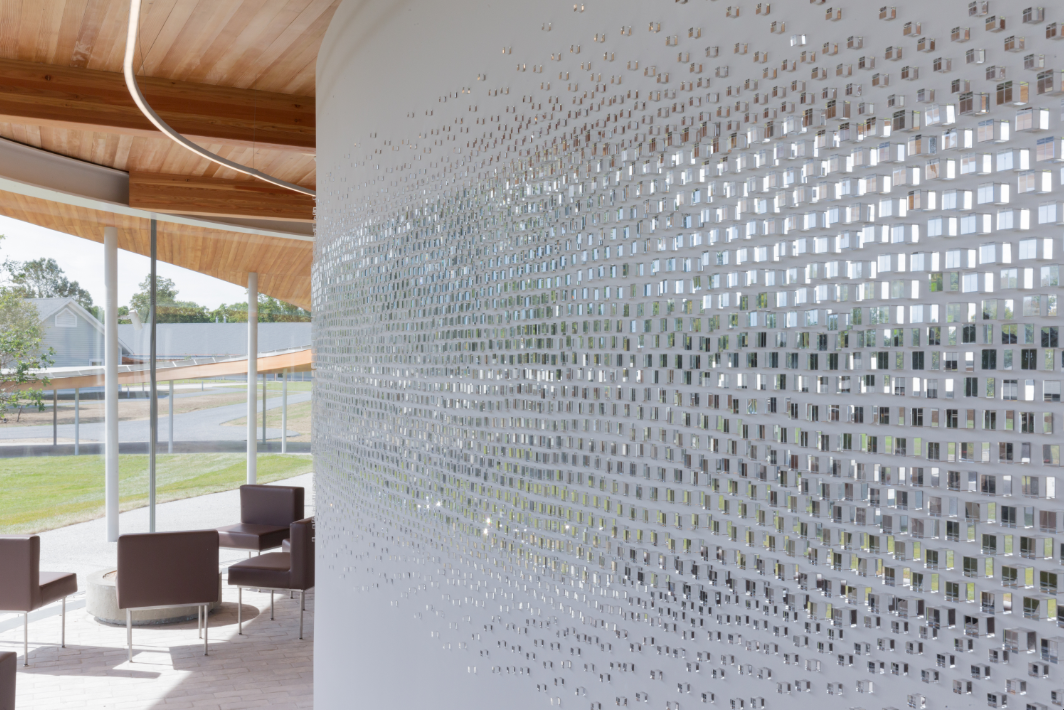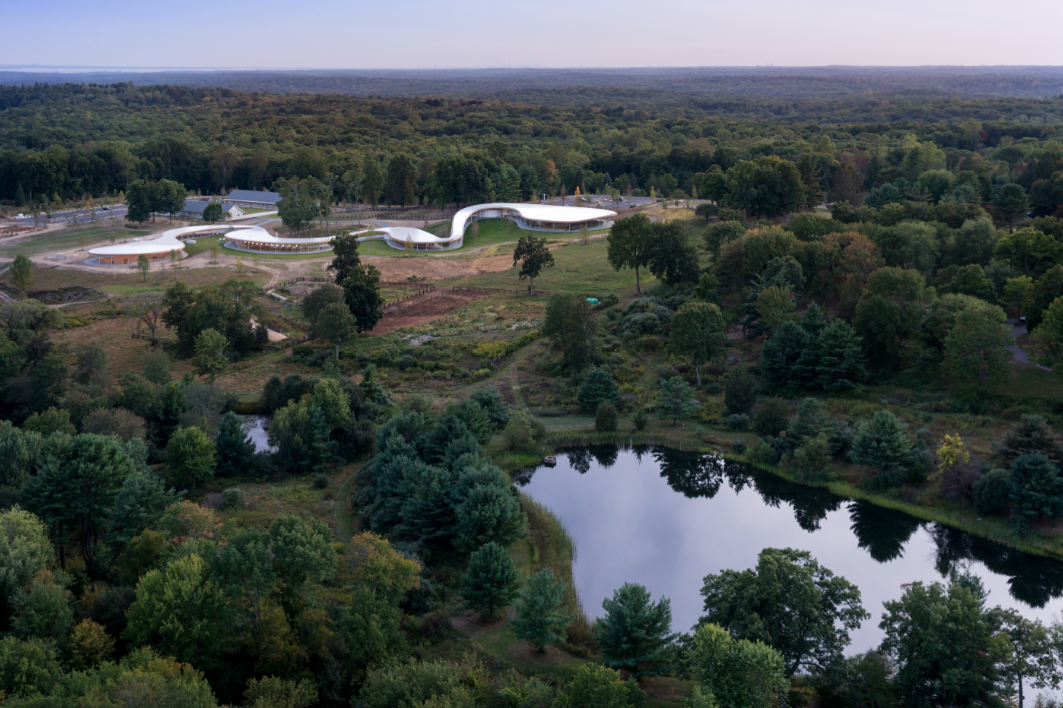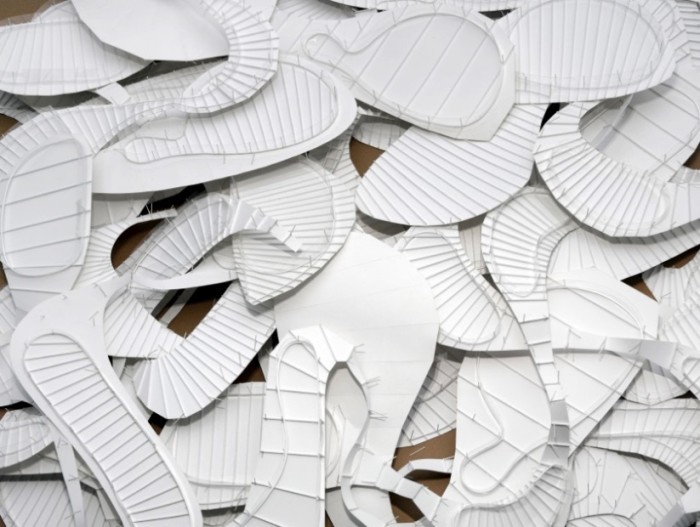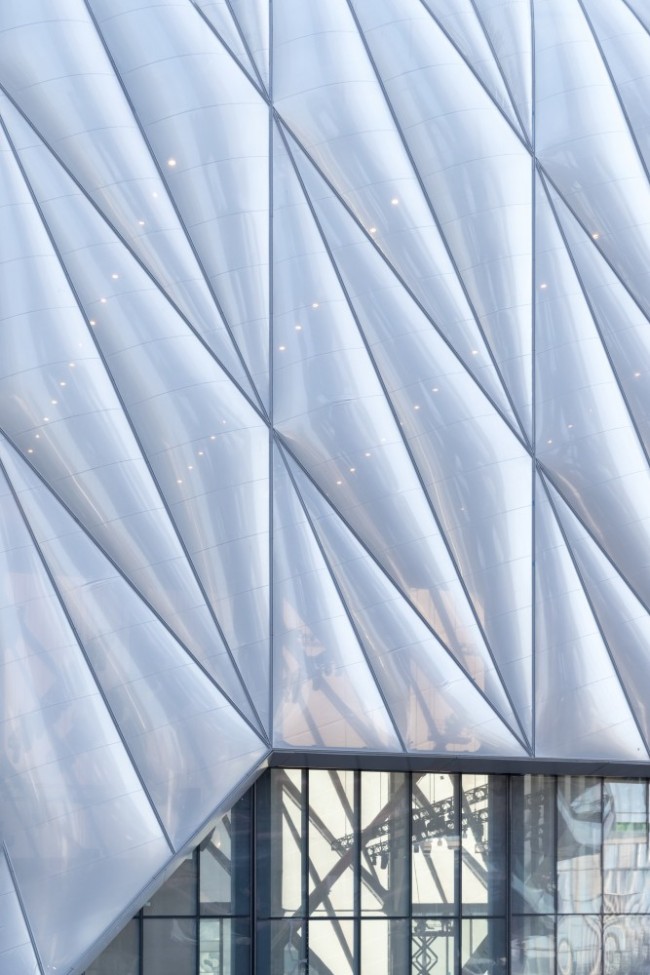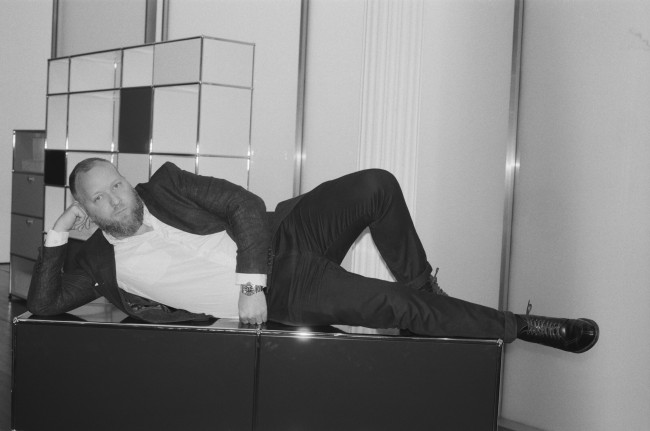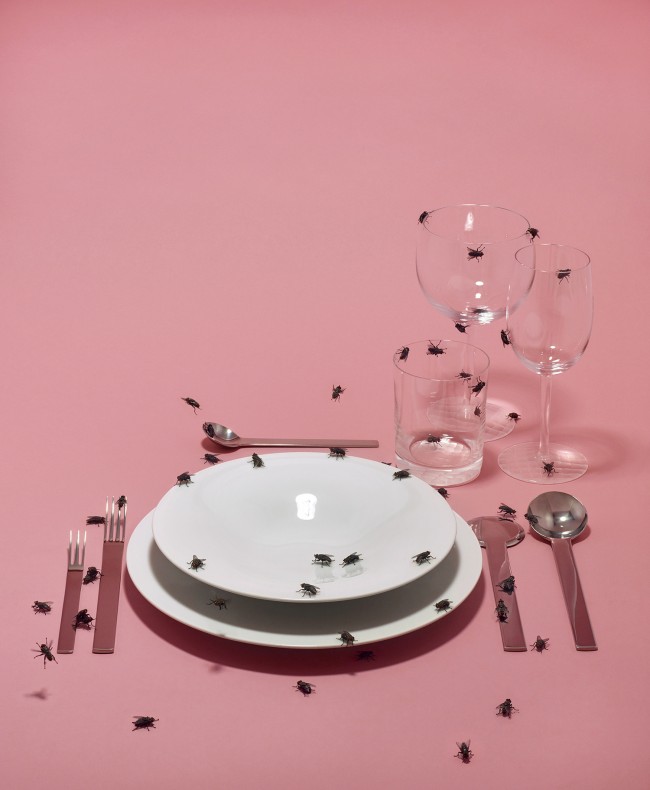A SHORT INTERVIEW WITH ARTIST THOMAS DEMAND
The German artist Thomas Demand is best known for his photographs of fastidiously detailed paper models of architectural spaces. His compositions depict vaguely unheimlich interiors, often recreations of locations that are famous, or infamous, for one reason or another. Lately, Demand has taken up a new hobby: photographing the models of a few of his noteworthy architect friends. The results have recently been collected in a pair of unrelated books, Model Studies I & II, and Koto-ku. PIN–UP caught up with the 51-year-old at the inauguration of Grace Farms, an elegant new community space and non-denominational spiritual center located on 80 pastoral acres near New Canaan, Connecticut which was designed by the Japanese architects Sejima and Nishizawa & Associates, better known as SANAA. For the project Demand was commissioned two new pieces, Farm 56 and Farm 58, which are abstract compositions pieced together from some of SANAA’s many study models for the Grace Farms project, created as they were developing the design for this building.
The two pieces of yours shown here at Grace Farms are different from what you normally do, in that you photographed models you didn’t make yourself. Does this constitute a new direction in your work?
I started photographing other people models as a hobby. It’s certainly not my usual way of working, but for this commission, it fits. And the reason I was willing to depart from my normal working method is that this is a unique commission, by which I mean, you can only see it here. It only makes sense here. It’s very much to show how many iterations the architects went through in order to arrive at this particular form. Sometimes people don’t appreciate how exact these curvatures are and how difficult it is to create a curvilinear form that’s lovely enough to really stand up to the nature around it. Many people try these free-floating forms buy really only a few can manage to pull them off. For me it was interesting to see how much work went into the whole thing before Sejima and Nishizawa arrived at the final shape. I wanted to show the thought process. The building for me is an idea, every artwork is an idea. Of course the architects concern themselves with deducing the building’s form, but for me, the idea behind the form is really the chief thing I’m interested in.
I suppose these two photos were taken at the SANAA offices in Tokyo?
Yes, I’ve been there many times. We met when they were preparing the (2010) architecture Biennale in Venice . I go to Tokyo at least once or twice a year.
Which other architect’s models will you be photographing?
First of all, if I knew I wouldn’t tell you. But I actually don’t know. This side project is not taking over my other work. For me it’s like a piano lesson. I am more interested in the thought process, I am more interested in models that are not representative, that are more about the distillation of an idea. That’s what it’s about. Because my own models more or less pronounce very clearly what they want to say. If an interesting opportunity to photograph another architect’s models comes along I will do it, but I don’t have an agenda. Although, I just published a nice book (*Model Studies I & II) with text by Joseph Grima that’s specifically concerned with this way of looking at models. And there’s another one too, actually, ((Model Studies: Kōtō-ku*)(https://www.amazon.com/Thomas-Demand-Model-Studies-Koto-Ku/dp/4865870997))published with Amana out of Japan. Basically I just love Japan. (Laughs.)
Buildings and space play such a pivotal role in your work. What draws you to architecture?
I think it’s the other way around: architects are drawn to my work. (Laughs.)
But you come from a family of architects, isn’t that right? Did you ever think you might become an architect yourself?
No, I never wanted to become an architect. But being raised by architects, I always had a keen awareness of space and the atmosphere of a room. In my work, I’m more interested in talking about the spaces we know, about spaces that speak to us, and how the images of those spaces influence the way we communicate. My work is more about the biography of the space, and less about the space itself. I think what architects like in my work is that it is so much about atmosphere. It seems some architects of a certain generation who came of age with really fantastic software got a little tired of the well-oiled machine that was cranking out mass-produced architecture at the time, and my work spoke to them in some way, so they got in touch with me, and that’s how the dialogue started. I did a few collaborative projects with Caruso St. John in London, and from there the other relationships, like the one with SANAA or Rem Koolhaas, just followed naturally.
I hear that you’re going to the Glass House after this?
I met Philip Johnson when I was really young. I know The Glass House inside and out — I have studied the photographs and plans. It was always my dream to work with him, so it has a really strong significance for me.
Photography by Iwan Baan.

